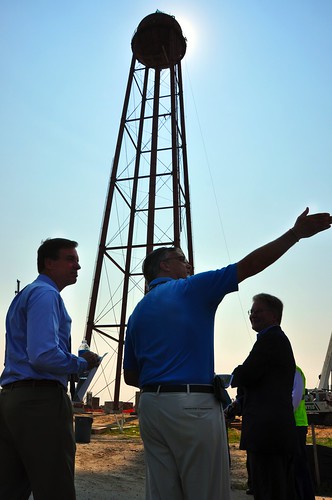Press Releases
Va., Md. Senators urge selection of region as test range for unmanned aircraft
~ “Mid-Atlantic provides existing test ranges, personnel and expertise” ~
Feb 08 2012
Contact: Kevin Hall - (202) 224-2023
 U.S. Sens. Jim Webb (D-VA), Mark Warner (D-VA), Barbara Mikulski (D-MD) and Ben Cardin (D-MD) today sent a joint letter to the Secretaries of Defense, Transportation and the NASA Administrator urging them to select the Virginia/Maryland region to host an Unmanned Aircraft Systems (UAS) test range. The Senators pointed out that UAS design and testing already takes place in the area, and the region has the appropriate airspace and test ranges for the type of advanced testing and development that will be required.
U.S. Sens. Jim Webb (D-VA), Mark Warner (D-VA), Barbara Mikulski (D-MD) and Ben Cardin (D-MD) today sent a joint letter to the Secretaries of Defense, Transportation and the NASA Administrator urging them to select the Virginia/Maryland region to host an Unmanned Aircraft Systems (UAS) test range. The Senators pointed out that UAS design and testing already takes place in the area, and the region has the appropriate airspace and test ranges for the type of advanced testing and development that will be required.
The National Defense Authorization Act and FAA Reauthorization Bill, both adopted by Congress in recent weeks, require the Federal Aviation Administration to identify six test ranges for UAS testing and development within 180 days, and incorporate airspace for military, commercial and privately-owned UAS by the Fall of 2015.
“The congressional intent … is clear: utilize existing facilities and range space. There is no accompanying appropriation to establish this program, nor should there be because the facilities and test ranges already exist,” the Senators wrote. “There is no reason to create additional restricted airspace, a lengthy process, or to construct additional range infrastructure, given the significant investment already made in the Maryland-Virginia region.”
The Senators point that Maryland’s Naval Air Station Patuxent River has supported the testing of nearly every type of UAS in service today. In addition, the NASA Wallops Flight Facility on Virginia’s Eastern Shore has robust existing infrastructure including a UAS runway, launch range, an aeronautical research airport, UAS hangar space and radar facilities. NASA’s Langley Research Center in Hampton, VA, already conducts advanced joint research on UAS systems with the FAA, and adjacent Langley Air Force Base has refined the process of collecting sensor data from UAS systems and serves as a key operational hub for the Air Force. Finally, the nonprofit National Institute of Aerospace research facility in Hampton has long-term relationships with many of the most highly acclaimed aerospace-related academic institutions and experts in the region and across the county.
“In today’s fiscally constrained budget environment, the integration of our states’ existing facilities will lower FAA’s risk and costs by eliminating the need to create additional restricted airspace and to build new infrastructure. A Mid-Atlantic UAS Test Range will meet the timelines established in the Act and satisfy the imperative of immediately identifying qualified personnel to execute the program successfully,” the Senators concluded.
Copies of the Senate letters to Defense Secretary Leon Panetta, Transportation Secretary Ray LaHood and NASA Administrator Charles Bolden can be accessed here.
On Jan. 20, 2012, Virginia Gov. Bob McDonnell and Maryland Gov. Martin O’Malley sent a similar joint letter to the Transportation Secretary noting the high level of bipartisan collaboration among the region’s elected leaders in efforts to establish a test range for both military and nonmilitary uses of unmanned aircraft.